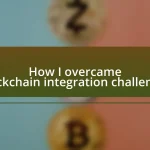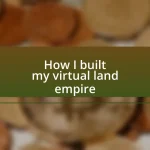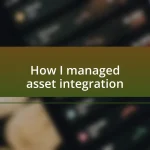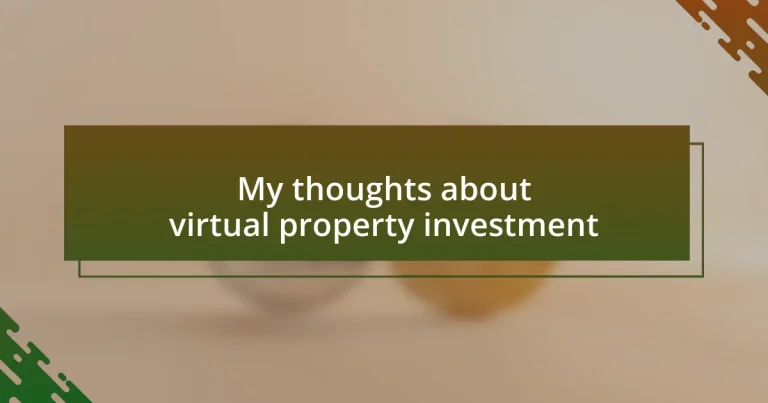Key takeaways:
- Virtual property investment offers low entry barriers, unique income streams, and a global market reach, making it accessible to a diverse range of investors.
- Key platforms like Decentraland, The Sandbox, and Cryptovoxels provide distinct advantages depending on the investor’s strategy and goals.
- Valuation of virtual properties involves consideration of community engagement, market trends, and unique experiences linked to the property.
- Investors should be aware of risks such as market volatility, technological obsolescence, and the importance of thorough platform vetting.
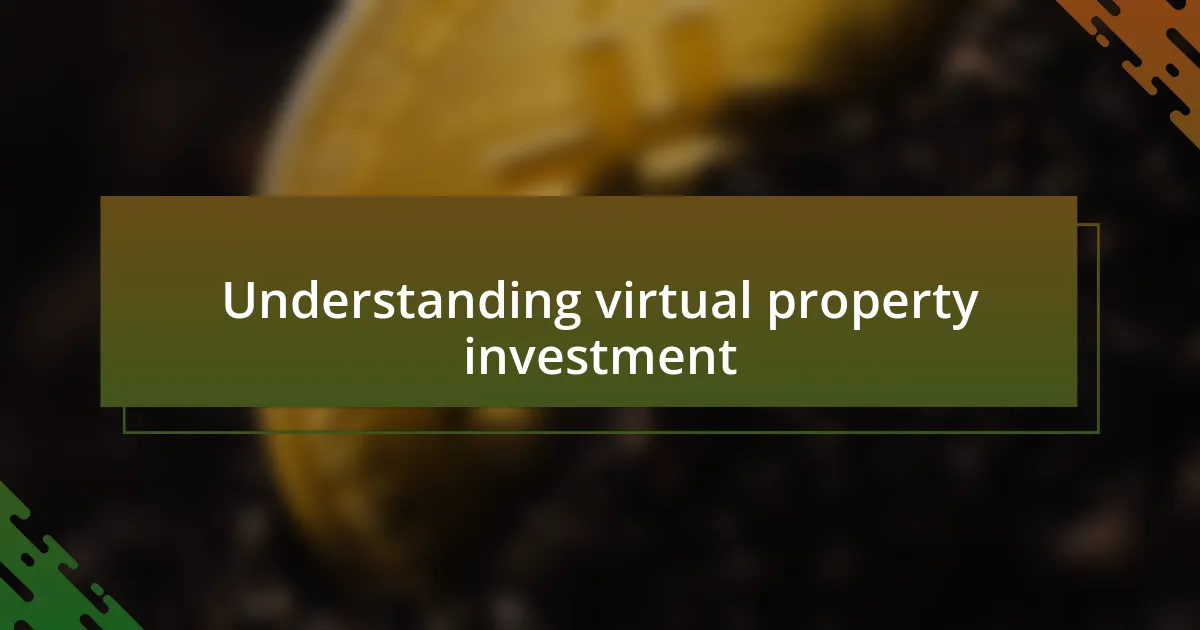
Understanding virtual property investment
Virtual property investment is a fascinating blend of technology and real estate, often leaving many either intrigued or skeptical. I remember when I first stumbled upon the concept of investing in digital real estate. The idea of owning virtual land felt surreal, yet it opened my eyes to an entirely new asset class that thrives in our increasingly digital world.
When I started to explore virtual properties further, I realized they can offer unique opportunities, much like traditional investments. They might have different fundamentals, but the underlying principles of location, scarcity, and demand still apply. Have you ever considered how the virtual landscape can create value similar to physical spaces? It’s a thought-provoking idea that gets to the heart of what makes real estate appealing, even in a digital context.
Investing in virtual properties requires a nuanced understanding of platforms like Decentraland or The Sandbox. These environments often operate on blockchain technology, which ensures ownership and enhances value through rarity. Speaking from experience, diving into these platforms not only felt like a thrilling adventure but also a valuable learning experience that challenged my perceptions of what property truly is.
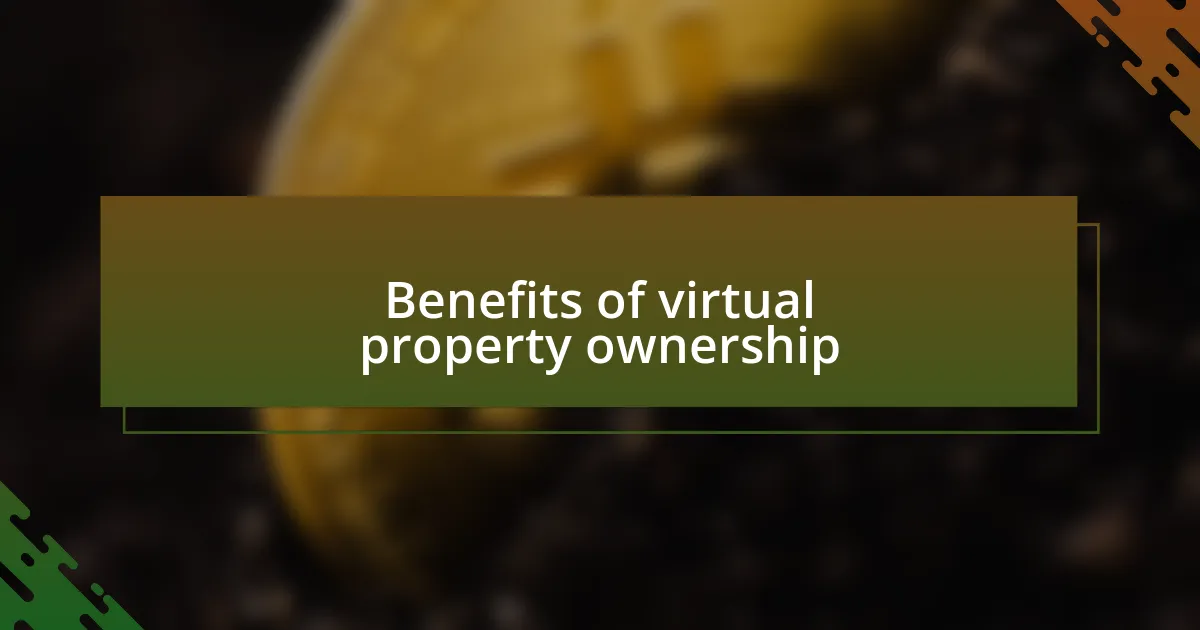
Benefits of virtual property ownership
Owning virtual property comes with several distinct benefits that traditional real estate often lacks. First, the low entry barriers appeal to a wider audience. I vividly remember attending my first virtual auction, where properties sold for fractions of what I would typically expect in the physical world. This accessibility made me reflect on how democratized investment has become, offering opportunities to a diverse group of investors who may not afford traditional real estate.
Additionally, virtual properties can generate income in unique ways, such as through leasing space for advertisements or hosting events. I once rented out my virtual land for a concert, where attendees paid to participate in a unique experience. This blend of creativity and profitability truly transformed my views on asset management and demonstrated the vast potential of virtual spaces.
Another significant advantage is the global reach these investments provide. Unlike traditional real estate, where geographical limitations can hinder sales, virtual properties can attract a worldwide audience. I recall selling a parcel of land to an investor halfway across the globe who never would have engaged with my property in a physical market. This global marketplace not only expands potential buyers but also enhances the overall value of virtual investments due to increased demand.
| Benefit | Description |
|---|---|
| Low Entry Barriers | Access to investment with minimal capital compared to traditional real estate. |
| Unique Income Streams | Opportunities to generate revenue through events and advertising. |
| Global Reach | A broader audience that transcends geographical limitations, enhancing demand. |
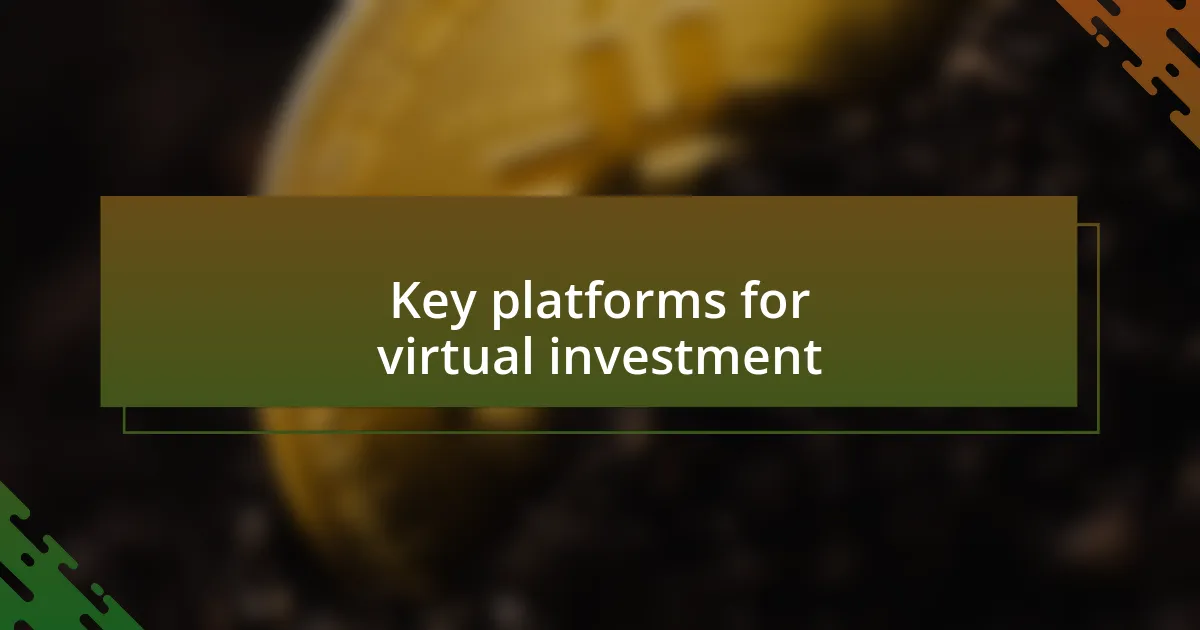
Key platforms for virtual investment
When exploring virtual property investment, the choice of platform can significantly impact your success. Each platform offers unique features catering to various investor needs. I remember my excitement when I first navigated the virtual real estate landscape, trying out different platforms that showcased diverse listings. This exploration helped me appreciate how each platform can provide distinct advantages depending on your investment strategy.
Here are some key platforms worth considering for virtual investment:
- Decentraland: A leading decentralized virtual world allowing users to create, explore, and buy virtual real estate with unique experiences and events.
- Cryptovoxels: This platform offers a more artistic approach, focusing on building and customizing virtual properties, making it popular among creators and artists.
- The Sandbox: Not only a place to buy land but also a full ecosystem for game development, emphasizing user-generated content and community engagement.
- Somnium Space: A virtual reality (VR) platform that prioritizes an immersive experience for users, making it ideal for interactive events and social gatherings.
Understanding these platforms will enrich your investment journey, helping you feel more confident in navigating the opportunities they present.
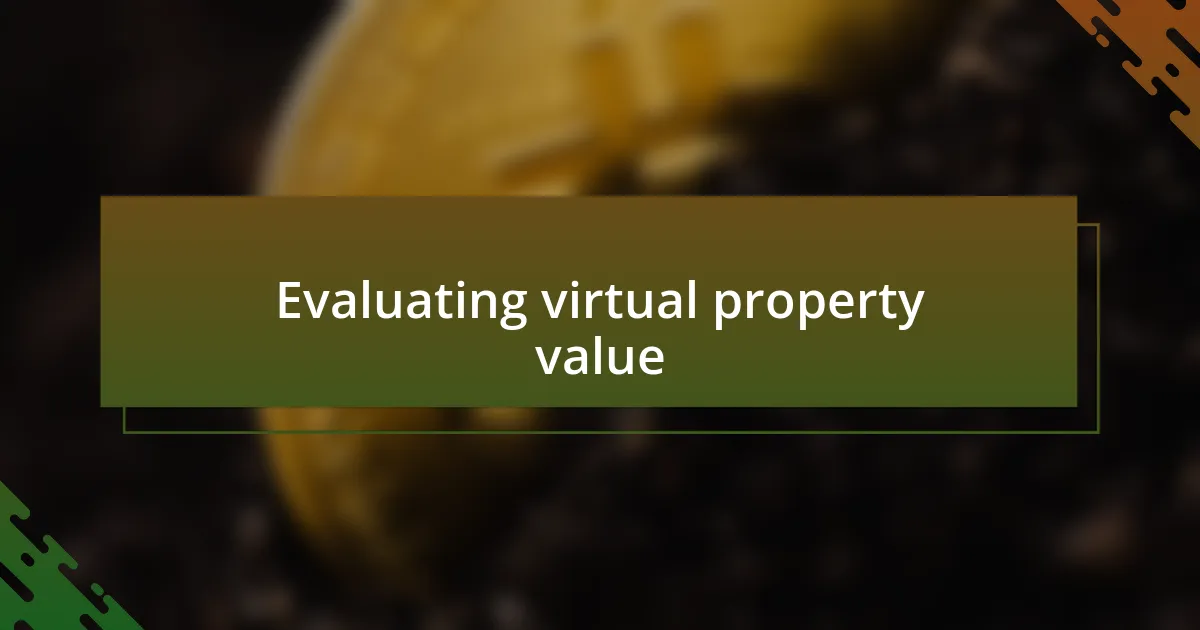
Evaluating virtual property value
Evaluating the value of virtual property requires a different lens compared to traditional real estate. When I first tried to grasp virtual property prices, it was baffling. How can pixels and code translate into thousands or even millions of dollars? It forced me to look closely at factors like location, scarcity, and the community’s engagement, much like I would with physical real estate.
One aspect that stands out in valuation is the concept of unique experiences tied to the property. For instance, I once purchased a piece of land in a bustling virtual neighborhood, thriving due to events and gatherings hosted there. This experience taught me that properties in active areas with strong community interaction can appreciate significantly in value over time, creating a tangible sense of ownership that transcends mere digital assets.
Another important factor is market trends, which can fluctuate rapidly in the virtual space. I remember watching the excitement around certain virtual plots spike after a popular artist hosted a concert in a neighboring area. It made me realize that the value can be highly sensitive to external influences. Staying informed about these dynamics is crucial to making informed investment decisions in the ever-evolving virtual real estate market.
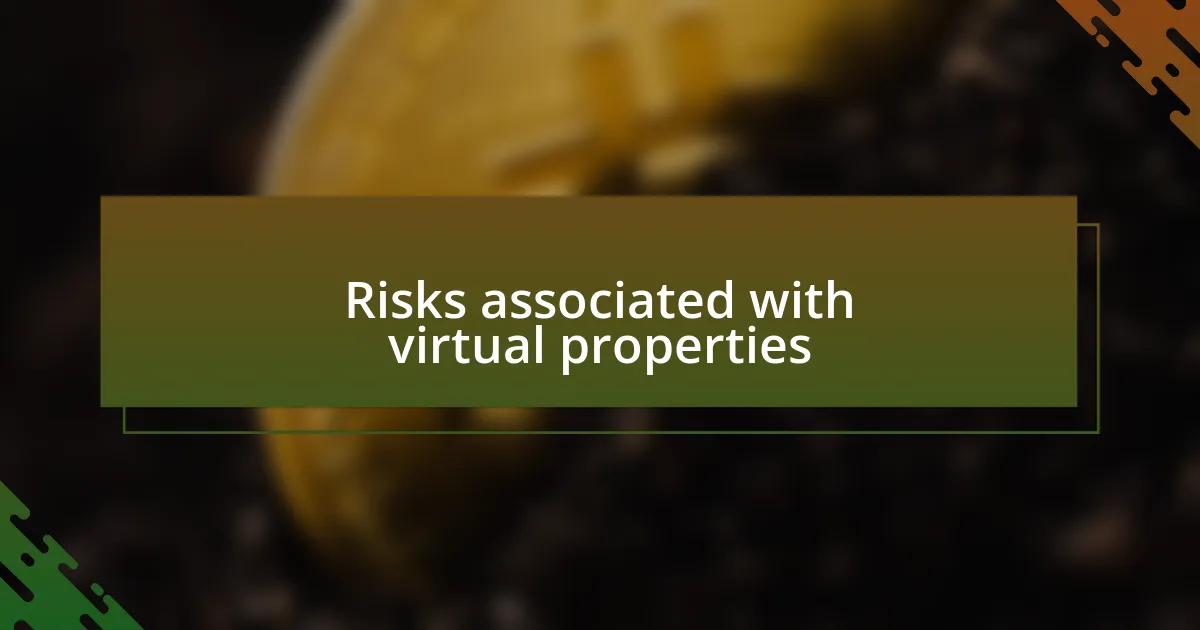
Risks associated with virtual properties
Investing in virtual properties comes with distinct risks that can catch many off guard. For instance, I recall my friend who invested heavily in a virtual land project that promised a robust return. Unfortunately, the platform suffered from mismanagement and ultimately collapsed, leaving her with a digital asset that lost all its value. Such situations emphasize the importance of vetting platforms thoroughly before committing any funds.
Market volatility is another significant challenge. I’ve noticed that the value of virtual properties can swing dramatically within short periods. In one instance, I bought a property that seemed to be a great deal, only to watch its value plummet after a trend shifted away from that virtual environment. It made me question: how can one predict such erratic changes? This experience taught me the importance of diversification and not placing all my bets on a single virtual property.
Lastly, there’s the risk of technological obsolescence. When I first dabbled in virtual real estate, I didn’t consider how quickly technology evolves. I once held a piece of virtual land that was built on an outdated platform. When a newer, more advanced technology emerged, my property became incompatible, reducing its appeal and market value. This landscape keeps shifting, reminding me that staying current with technology trends is just as vital as understanding market conditions.
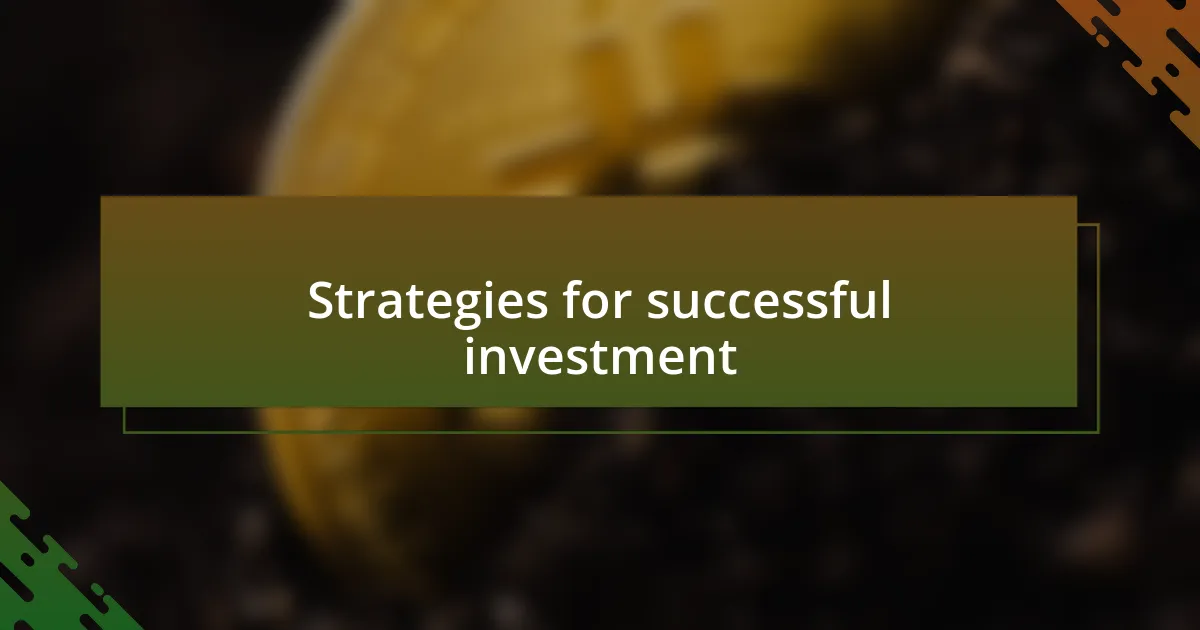
Strategies for successful investment
When it comes to successfully investing in virtual properties, one effective strategy is to conduct thorough research on the platforms and projects available. I remember spending countless hours looking into various virtual worlds before making my first purchase. It’s crucial to evaluate their financial health and user engagement levels to gauge longevity and potential return on investment. Have you ever considered how a project’s community can affect its value? Trust me, a strong, active community can bolster the property’s worth far beyond initial expectations.
Another strategy is to set clear investment goals. I learned this the hard way when I jumped into several virtual lands without a cohesive plan. After realizing I had no specific aim, I found myself overwhelmed and uncertain about when to sell or hold. By defining what I wanted—whether it was long-term appreciation or flipping for quick profits—I was better able to navigate my decisions.
Finally, diversifying your portfolio is essential. Just as in traditional real estate, putting all your resources into one virtual property can be risky. I adopted a diversification strategy after experiencing a sudden drop in one of my investments. By spreading my funds across different virtual environments, I mitigated the impact of a single failure, allowing me to remain confident and resilient. Have you thought about how you can apply diversification in your virtual investments? It’s a game changer for managing risks effectively.








